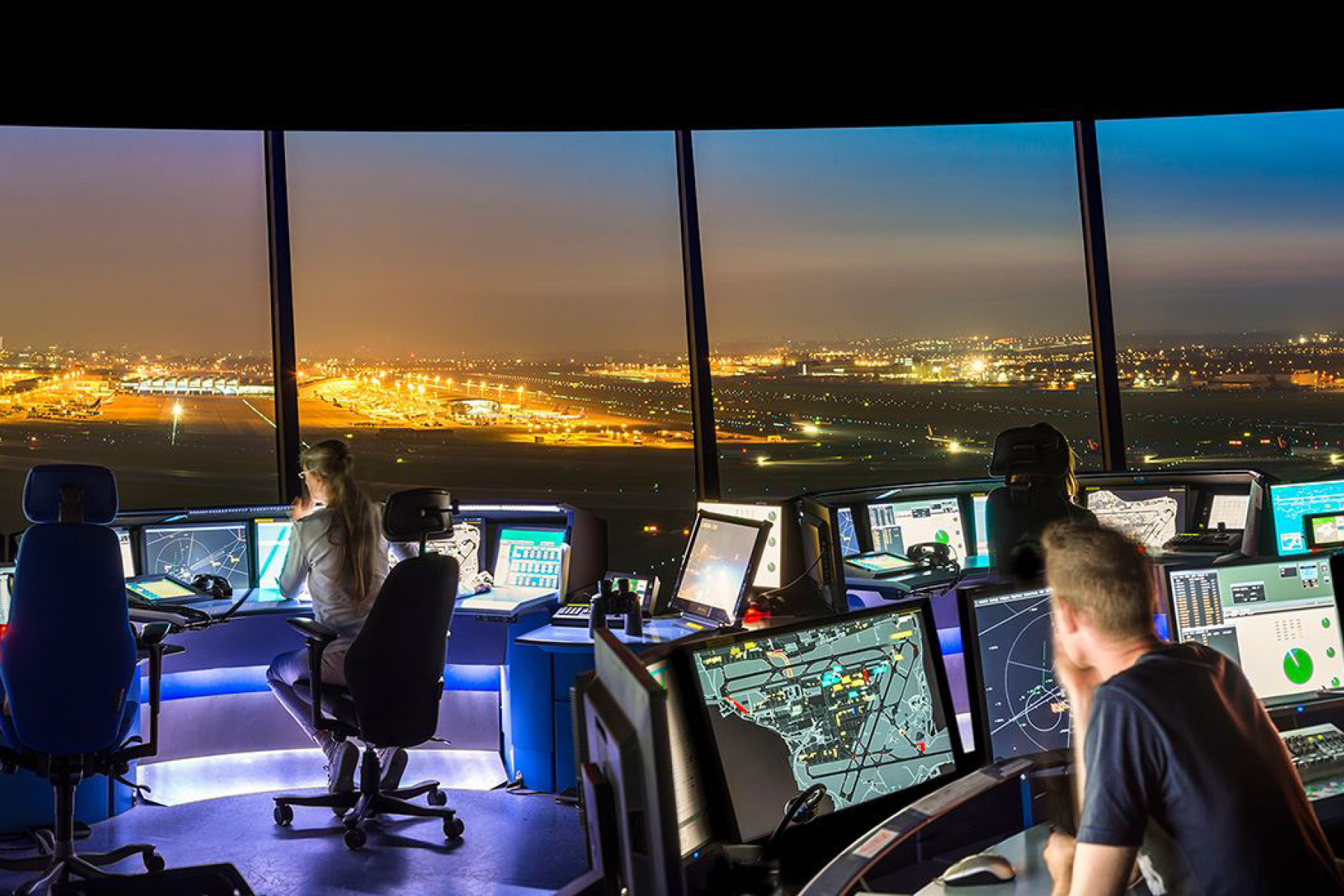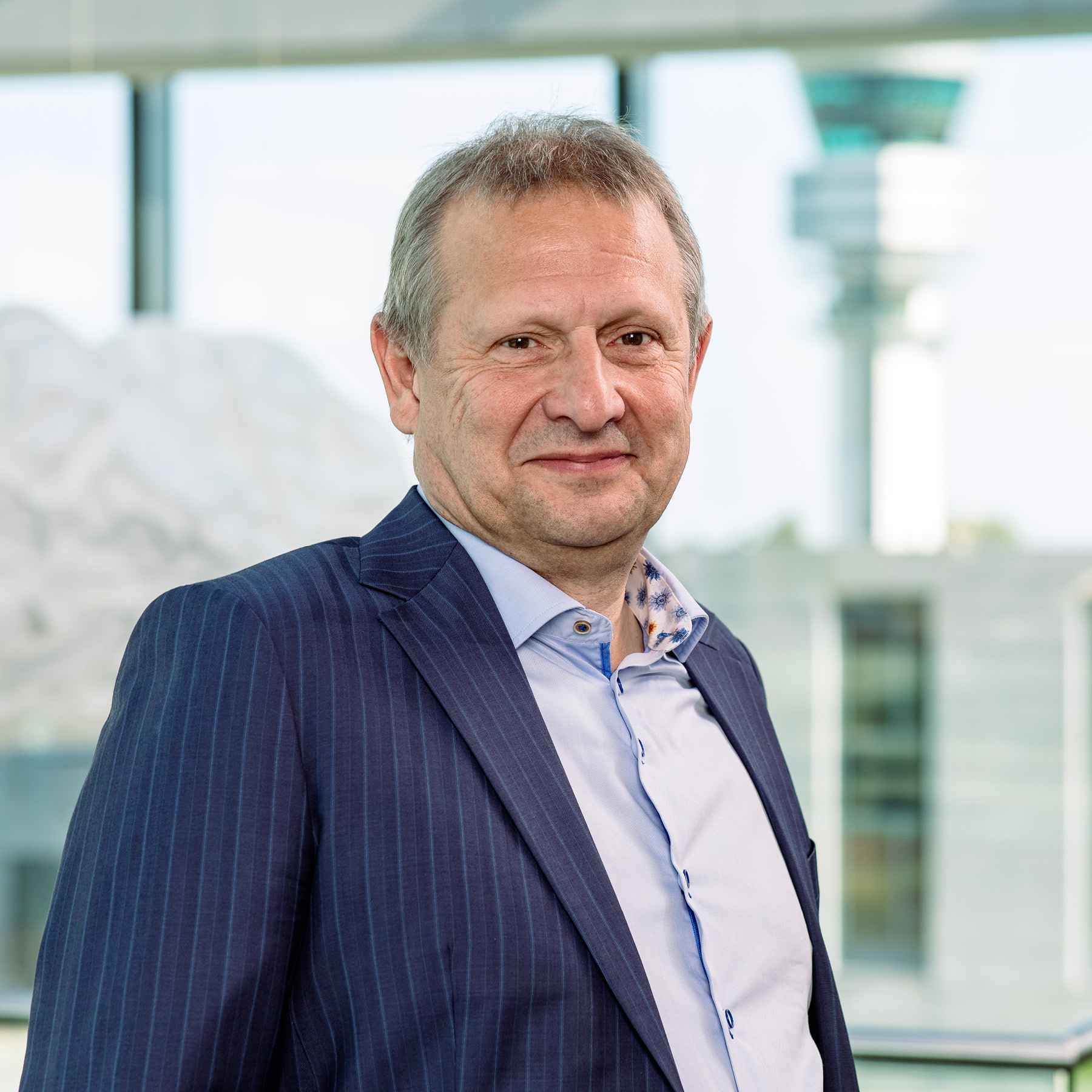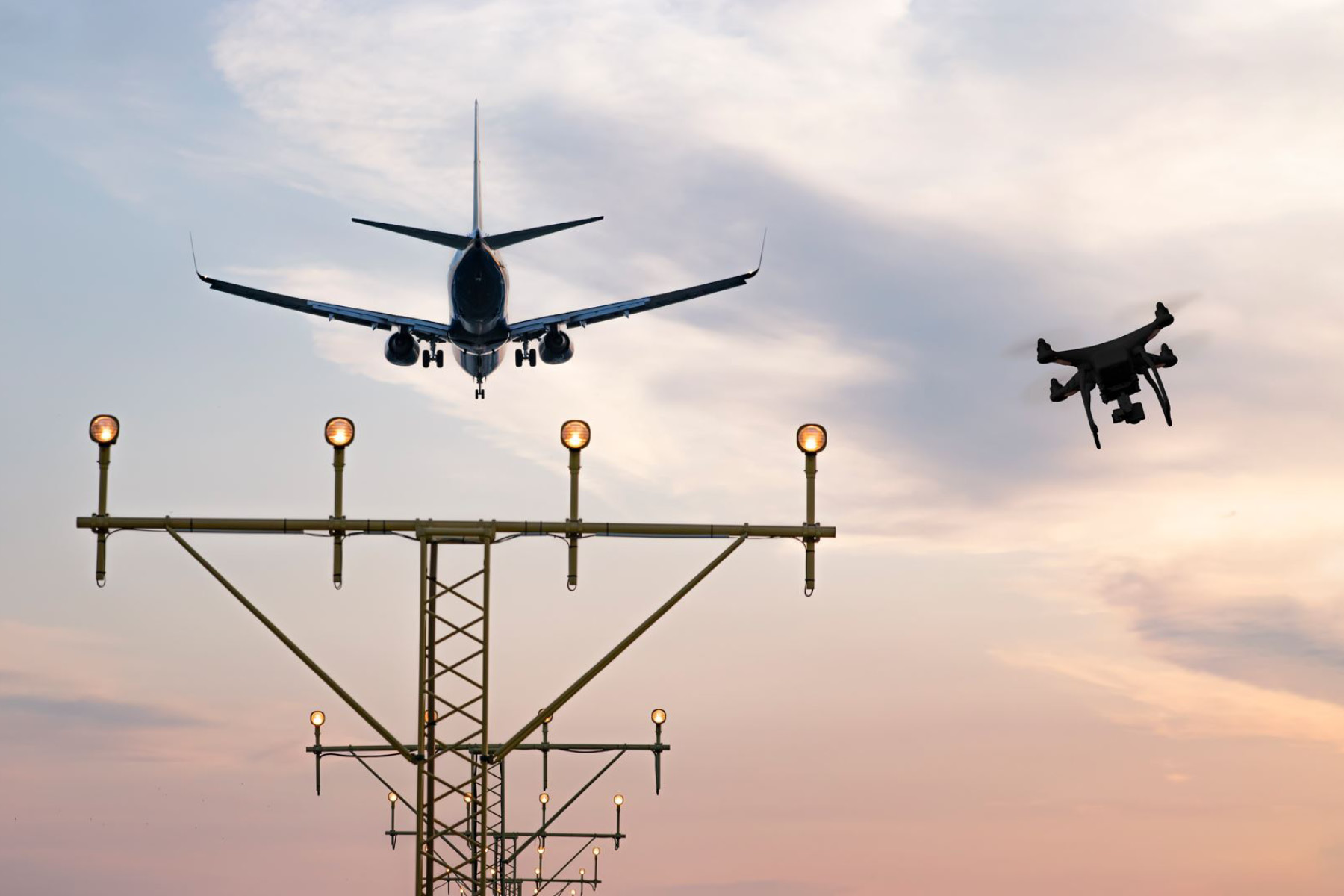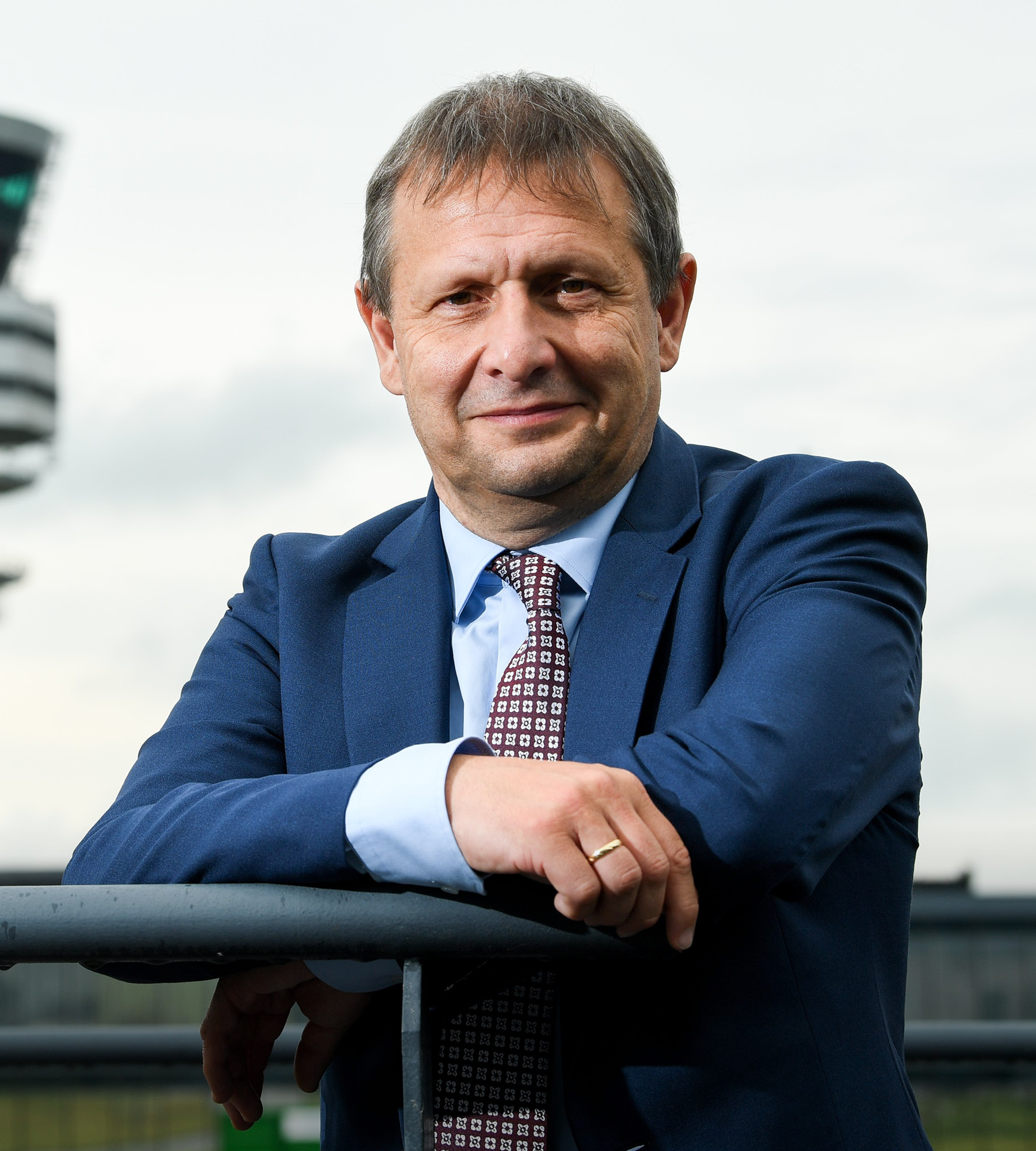Language
You can read the magazine in one of the following languages
Picture this: You’re lounging on the pool-side terrace of your Mediterranean holiday villa this summer. The temperature is warmly enveloping, the sea breeze gentle. You put down your novel and dip your sunglasses, taking a moment to drink in the intense blue sky, all cloudless and clear. The scene above your sun-kissed head is one of calm and quietude.
And it’s all an illusion. Not quite Truman Show-level illusion, admittedly, but getting there.
Because if you’re reading these words during regular operational hours, literally thousands of aircraft will be cruising the skies above Europe simultaneously – more than 30,000 during the average day – making the continent one huge, noisy, hectic celestial traffic jam. And according to the latest figures from pan-European aviation organization Eurocontrol, that number is on an upward trajectory and likely to continue.

Thankfully, though, an invisible army is working behind the scenes to make sense of the heavenly clutter, 24 hours a day, 365 days a year. We know them as air traffic controllers.
Skeyes is an autonomous public company overseeing air traffic in the civil airspace that the Belgian state is responsible for, employing around 900 staff. One of the most important players in the European sector, the company – once known as Belgocontrol – handles more than a million movements per year, up to an altitude of 7,500 meters, in one of the continent’s most complex airspace.

“If you want to invest in people and infrastructure, you need to be a healthy company.”
“When I arrived at Belgocontrol in 2013, I saw that there were a lot of opportunities, but the problem was that it was wrongly managed,” says Skeyes’ CEO Johan Decuyper, a former Head of Cabinet in Belgium’s Secretary of State for Mobility department.
“After one year, I put a new management in place and made a new management contract with the federal government. And from that moment on, we became financially healthy, and we are still that today. If you want to invest in people and infrastructure, you need to be a healthy company.”
The industry has come a long way since the world’s first air traffic control tower – if you could call it that – was built at London’s Croydon Airport in 1920: a primitive, five-meter-high wooden hut with windows on all four sides. Radio wave communications between pilots and controllers on civil flights gave way to radar after World War II, before IBM laid the groundwork for the modern era in 1967 with the first prototype air traffic control computer.
Right now, the industry is moving through another major technological gear shift, in the form of state-of-the-art ‘digital towers’. This means multiple airports, relatively large distances apart, can be managed from a single digital control center, using masts equipped with high-quality cameras, infrared systems and intelligent sensors placed at the airports involved. Real-time images can be projected on large screens at the new digital hubs, painting 360-degree perspectives.
Skeyes has considerable skin in this game. By 2026, air traffic at Charleroi and Liège, situated 100 kilometers apart, will be remotely managed from a digital tower in Namur. Developed in partnership with Saab Group Digital Towers, it’s been lauded as one of the most advanced projects in aviation.

“Air traffic control in the longer-term will need much less human interference.”
“We think it’s very important for enhanced reality, more functionality,” Decuyper says. “We will combine air traffic control of day passengers [Charleroi] and airports with night cargo [Liège], which will have effects on productivity. I know in Europe there are already digital towers, but they’re often for a more limited number of movements or less complex environments.”
And the changeover from analogue to digital doesn’t stop there. Decuyper is tipping drones to play a starring role in aviation’s future; Skeyes has already entered a joint venture with Brussels Airport Company called SkeyDrone, with a view to using uncrewed aircraft for safety, security and efficiency operations.
“Air traffic control is a very consuming human business,” Decuyper explains. “Our air traffic controllers have to talk constantly with the pilots to separate the planes and so on. With drones, it’ll be programs, it’ll be automation.”
“I think air traffic control in the longer-term will need much less human interference. But we will still need IT people, we need technical people. And, like in other countries, in Belgium the labor market is becoming increasingly difficult. To find the right people to do these things is not that easy.
“Therefore, we have to adapt. Because otherwise we won’t have specialists.”
Decuyper’s desire to surround himself with ‘perfect fits’ extends to his own Executive Committee; his COO, for instance, has hands-on experience as a former air traffic controller.
“I believe a lot in empowerment but also in good teams, having the right person in the right place at the right time,” he says. “Sometimes you see that the CEO tries to have clones of themselves in their executive committee. No, that’s not good. It should be complementary.”
As Skeyes’ new digital tower in Namur takes shape, and with European air traffic volumes now back to 98 percent of pre-pandemic levels and rising, Decuyper is ever mindful of the existential challenges facing his industry as whole.

“We have to make a large effort to make aviation greener. It’s what society demands.”
“We have to make a large effort to make aviation greener. It’s what society demands,” he says. “We are very busy working with airlines and airports to define procedures that use less fuel and make less noise. And there, we are investing a lot.
“There is a lot of interference between our radars and the installation of windmills, and as you know, the strategy of Europe is to lean more into renewables such as wind and solar energy. We are working on having infrastructure that is more independent, and that can admit more wind installation in our country and others.
“Also Belgium is a little country with a small airspace, and half of the airspace is military. With what’s going on in Ukraine, military exercises again become more important. And the next generation of fighter planes need more airspace than before. And on the other hand, we want to implement green deals. This is a big challenge.”
Either way, with a 98 percent punctuality rate, and over a decade’s worth of experience successfully managing some of the planet’s busiest airspace, any passenger taking off from, landing in or crossing the European land mass, can rest assured they’re in safe hands with Skeyes. And that’s definitely no illusion.
